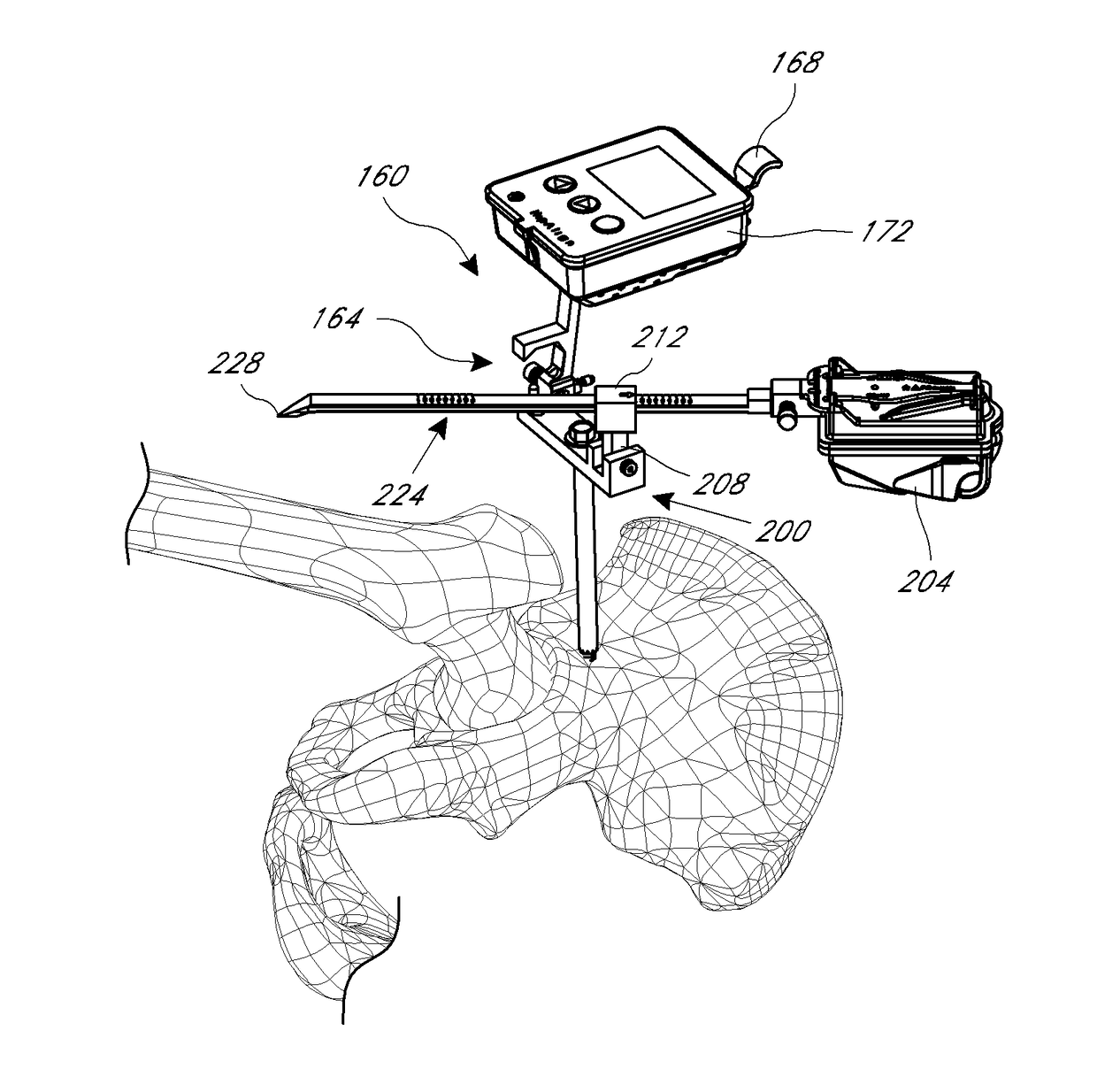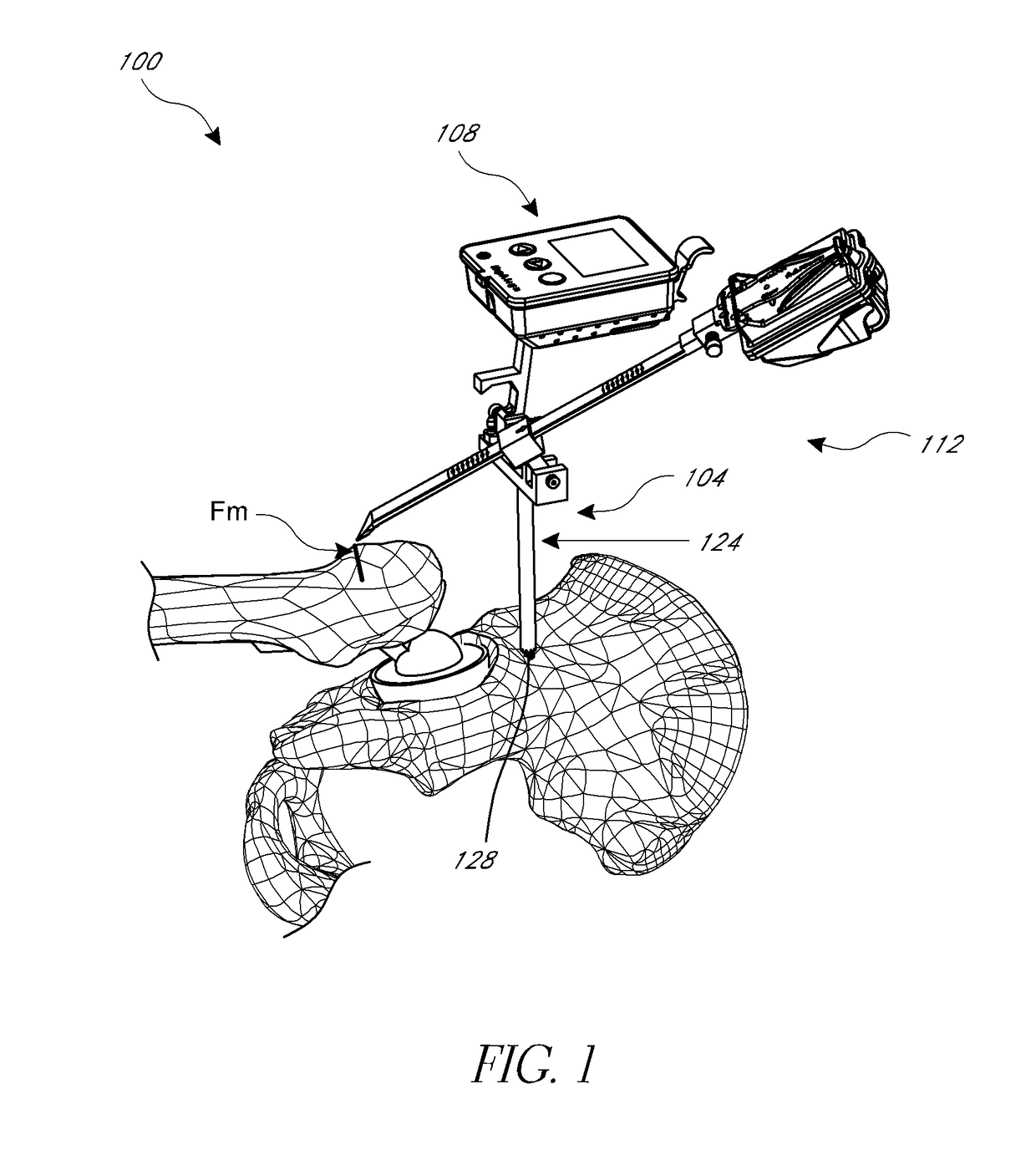Hip replacement navigation system and method
a navigation system and hip technology, applied in the field of hip replacement, can solve the problems of dislocation of the hip, unacceptably high percentage of patients with the relative high incidence of poor placement of the cup and ball components of the prosthetic hip joint, so as to improve the accuracy of the orientation of the componen
- Summary
- Abstract
- Description
- Claims
- Application Information
AI Technical Summary
Benefits of technology
Problems solved by technology
Method used
Image
Examples
Embodiment Construction
[0055]A variety of systems and methods are discussed below that can be used to improve outcomes for patients by increasing the likelihood of proper placement of a hip joint. These systems can be focused on inertial navigation techniques, close range optical navigation, or a combination of inertial and optical navigation.
I. Hip Navigation Using Inertial Sensors
[0056]Systems and methods described below can improve prosthetic hip joint placement using navigation in connection with referencing anatomical landmarks, incorporating preoperative custom fit jigs based on imaging, and a combination of pre-operative imaging and landmark referencing. These hip procedures generally guide a prosthetic hip to an orientation within the acetabulum that minimizes the chance of dislocation due to impingement of the femoral neck on the cup or on bones around the acetabulum or other reasons related to suboptimal orientation of the prosthetic. Various techniques leverage population averages of proper pla...
PUM
 Login to View More
Login to View More Abstract
Description
Claims
Application Information
 Login to View More
Login to View More - R&D
- Intellectual Property
- Life Sciences
- Materials
- Tech Scout
- Unparalleled Data Quality
- Higher Quality Content
- 60% Fewer Hallucinations
Browse by: Latest US Patents, China's latest patents, Technical Efficacy Thesaurus, Application Domain, Technology Topic, Popular Technical Reports.
© 2025 PatSnap. All rights reserved.Legal|Privacy policy|Modern Slavery Act Transparency Statement|Sitemap|About US| Contact US: help@patsnap.com



